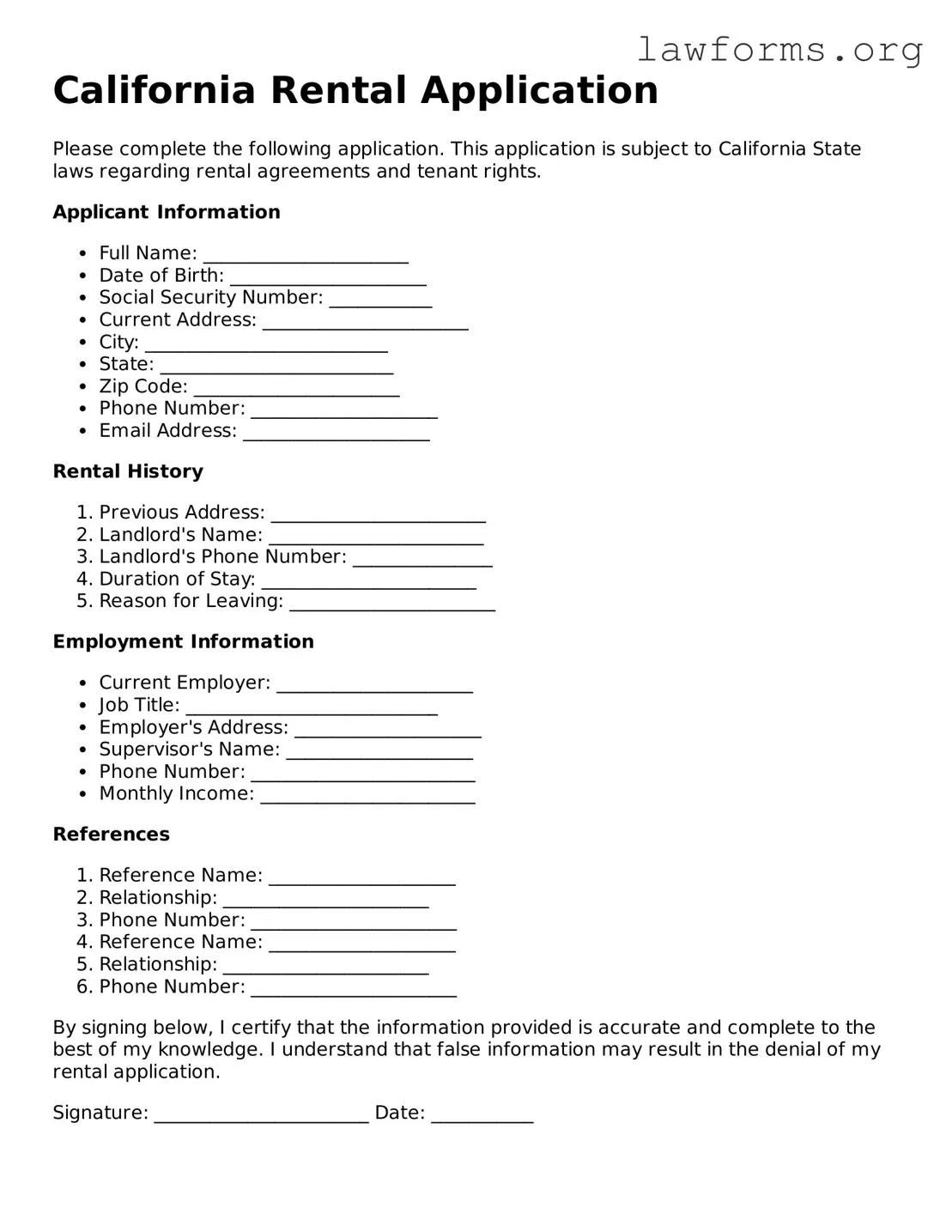California Rental Application
Please complete the following application. This application is subject to California State laws regarding rental agreements and tenant rights.
Applicant Information
- Full Name: ______________________
- Date of Birth: _____________________
- Social Security Number: ___________
- Current Address: ______________________
- City: __________________________
- State: _________________________
- Zip Code: ______________________
- Phone Number: ____________________
- Email Address: ____________________
Rental History
- Previous Address: _______________________
- Landlord's Name: _______________________
- Landlord's Phone Number: _______________
- Duration of Stay: _______________________
- Reason for Leaving: ______________________
Employment Information
- Current Employer: _____________________
- Job Title: ___________________________
- Employer's Address: ____________________
- Supervisor's Name: ____________________
- Phone Number: ________________________
- Monthly Income: _______________________
References
- Reference Name: ____________________
- Relationship: ______________________
- Phone Number: ______________________
- Reference Name: ____________________
- Relationship: ______________________
- Phone Number: ______________________
By signing below, I certify that the information provided is accurate and complete to the best of my knowledge. I understand that false information may result in the denial of my rental application.
Signature: _______________________ Date: ___________
